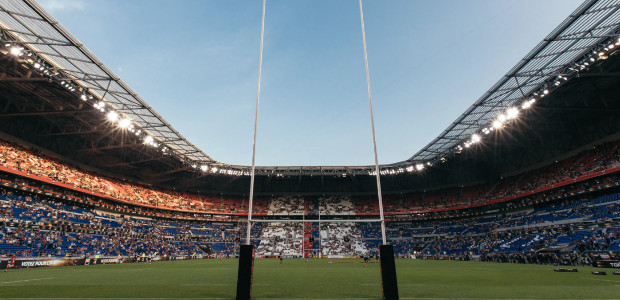The Differences Between Rugby Union and League
As any rugby fan knows there are 2 different styles of rugby. You have Rugby Union and Rugby League. To a casual observer they may seem to be the same but they are in fact totally different. They both employ different tactics, playing styles and game management.
The Rugby Football Union was founded in 1871 and back then there was only Rugby Football. The Union was formed to regulate the games and set agreed upon rules. In 1895 cracks appeared when there was much discussion about players being paid. In 1892 some Yorkshire clubs had been accused of running their clubs professionally after they had compensated some players for not being able to attend their places of employment.
For most of its life, Rugby has been an amateur game. This row resulted in the founding of a separate code; Rugby League and Rugby Union was used to make clear the differentiation. Although it was pay that forced the split it still wasn’t until 1995 that Rugby Union became professional after the International Rugby Football Board (now World Rugby) sanctioned it.
Most obvious differences between the codes
The first thing you would notice is the number of players on the pitch. Rugby Union has 15 players and Rugby league is played with only 13. Points are allocated differently. A try in Rugby union will give you 5 points but in Rugby League it is only worth 4. Conversions are 2 points in both codes but a drop goal or penalty will be awarded 3 points in Rugby Union but in Rugby League a drop goal is only 1 point and a penalty 2.
There are a different amount of substitutions allowed between the two codes. In Rugby League you can make up to 10 substitutions but in Rugby League there are only 8. Rugby League tends to be a faster sport with more collisions and also more injuries.
Tackling between the codes
Rugby League is said to be a harder, faster sport and one reason fans will point to is the tackles. In Rugby Union once a player has been tackled a ruck has to be formed and a player from each side will contest the ball but in Rugby League once a player has been tackled he must use his feet to roll the ball behind themselves so it can be picked up by another player.
There are a finite amount of times a team can be tackled in Rugby League. Once a team has been tackled a number of times the ball must be given to the opposition. In Rugby Union there is in effect no finite tackle limit and the game could continue for a number of tackles without giving up the ball. If the ball goes out of play in Rugby League if the ball goes out of play the opposition will be awarded a scrum which will normally result in them capturing the ball. In Rugby Union if the ball leaves the field a line-out will be awarded to the other team and the game restarted.
Tackling itself is the same and the aim of the game is exactly the same with tries, conversions, drop goals and penalties. Just different rules and a different scoring system.
Who plays which code?
Going far back the differences between who played which code was defined by class lines. Working class players simply couldn’t afford to dodge work to play sports. Rugby back then wasn’t putting bread on the table so playing and training for Rugby Union was difficult. Once Rugby League started paying players it became more popular among working men.
Rugby union tended to be played in public schools, universities and grammar schools which also helped cement the class divides. This was not just in England. It was also obvious in New Zealand and Australia. Traditionally in the north of England Rugby League would have been played and Rugby Union more in the south.
Professional game
Nowadays all the top teams are professional with full time players meaning that players can concentrate on their training and not worry about holding down a full time job. That isn’t to say there isn’t amatuer rugby anymore. The sport continues to flourish and the old arguments are still there about paying players.
Yet for all the professionalism it was not so long ago that Ulster tasted European success in the European Cup (Heineken Cup) with a group of part timers. Back in 1999 with a team of both full timers and part timers Ulster lifted the cup. This is almost impossible to imagine happening again with a team with so few full time players. Ulster beat Colomiers of France 21-6 at Lansdowne Road.
Betting in rugby
It is perfectly possible to bet on both codes of rugby pretty much like any other sport. You can do this in an online casinó or betting website or by visiting a traditional betting shop. There are differences to be observed though. As you have seen the rules and scoring system are different and the game is played differently so these factors need to be considered when placing a bet.
Where you are most likely going to get confused about is when points betting. You need to look at the differences in what a bookmaker is offering in terms of points spreading. In Rugby Union a typical points spread should be around 35 but in Rugby League it will only be 28. Perhaps if you are interested in online gambling you may want to look at online casinos which offer great entertainment. These days they have more games than a traditional casino. You can play baccarat, blackjack, poker, craps and roulette along with slots machines.
2020 saw the global pandemic that is Covid-19 this has forced business including casinos to close their doors making online gaming and casinos very popular and convenient to use. Of course Covid also affected sports all over the world.
Whichever your preferred code is Rugby is a great sport to watch and play and as sports return to normal you will surely continue to see League and Union continue to grow.









